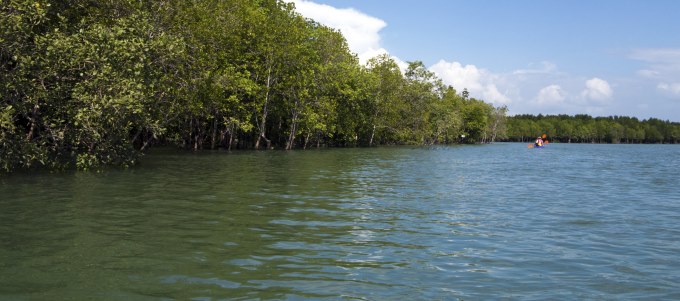The U.S. Environmental Protection Agency (EPA) announced the winners of its sixth annual Campus RainWorks Challenge, a national collegiate competition that engages the next generation of environmental professionals to design innovative solutions for stormwater pollution.
“Today’s students are tomorrow’s innovators,” said EPA Office of Water Assistant Administrator David Ross. “Through EPA’s Campus RainWorks Challenge, we are harnessing the creativity and enthusiasm of college students to solve local stormwater problems and better protect the environment.”
The Campus RainWorks Challenge asks students and faculty members at colleges and universities across the country to apply green infrastructure design principles, foster interdisciplinary collaboration, and increase the use of green infrastructure on their campuses. EPA invited student teams to compete in two design categories: Master Plan, which examines how green infrastructure can be broadly integrated across campus; and, Demonstration Project, which focuses on how green infrastructure can address stormwater pollution at a specific site on campus.
With the help of a faculty advisor, teams of students focused their expertise, creativity, and energy on the challenges of stormwater management and showcased the environmental, economic, and social benefits of green infrastructure.
Judges from EPA, the American Society of Civil Engineers (Reston; Va.), the American Society of Landscape Architects (Washington, D.C.), and the Water Environment Federation (Alexandria, Va.) volunteered their time to evaluate design proposals submitted by student teams.
2018 U.S. EPA Campus RainWorks Challenge winners
Demonstration Project Category
- First Place: University of Illinois at Urbana-Champaign
- Second Place: University of New Mexico (Albuquerque)
- Honorable Mention: University of Arizona (Tucson)
Master Plan Category
- First Place: University of California, Berkeley
- Second Place: University of Maryland, College Park
- Honorable Mention: University of Arizona
First-place teams will receive a $2000 student prize to be split among team members and a $3000 faculty prize to support green infrastructure research and education. Second-place teams will receive a $1000 student prize and a $2000 faculty prize.
University of Illinois at Urbana-Champaign
First Place: Demonstration Project Category
The team’s project, “Campus Hydro Redesigned” integrates a variety of green infrastructure practices into a campus parking lot, reducing impervious area, and completely mitigating the stormwater runoff from remaining impervious surfaces. Using descriptive signage and native vegetation, the team’s design also seeks to add ecological, social, and aesthetic value to the site, converting parking space into a multi-functional campus amenity.
University of New Mexico
Second Place: Demonstration Project Category
With their project, “Johnson Field (Re)Creation” this team proposes to transform an athletic field to better manage stormwater runoff, reduce local flooding, and improve water efficiency on-site. By recessing the playing field 5 cm (2 in) and encircling the field with a network of rain gardens and new tree plantings, the design would result in the annual capture of over 3.7 million L (1 million gal) of stormwater.
University of California, Berkeley
First Place: Master Plan Category
Titled “(Re)Generations,” this project exemplifies long-term commitment and vision in stormwater management. Strawberry Creek is a local water body and defining feature of the Berkeley campus. Using this water body as a connective thread, the team’s design strategically phases green infrastructure across the campus, capturing 100%of the university’s stormwater runoff by 2100, and restoring water quality to the Strawberry Creek watershed. Watch the team’s video about their project:
University of Maryland, College Park
Second Place: Master Plan Category
The “Champion Gateway” project integrates multiple green infrastructure practices into a campus entryway and pedestrian corridor adjacent to the proposed Purple Line, a light rail system that will connect Metro service lines and bring increased foot traffic to the University. The team’s design decreases impervious surface by over 70%and increases tree canopy by planting over 350 new trees. The redesigned site provides environmental and aesthetic value to the College Park campus, and highlights the wisdom of aligning transportation and water infrastructure planning.





